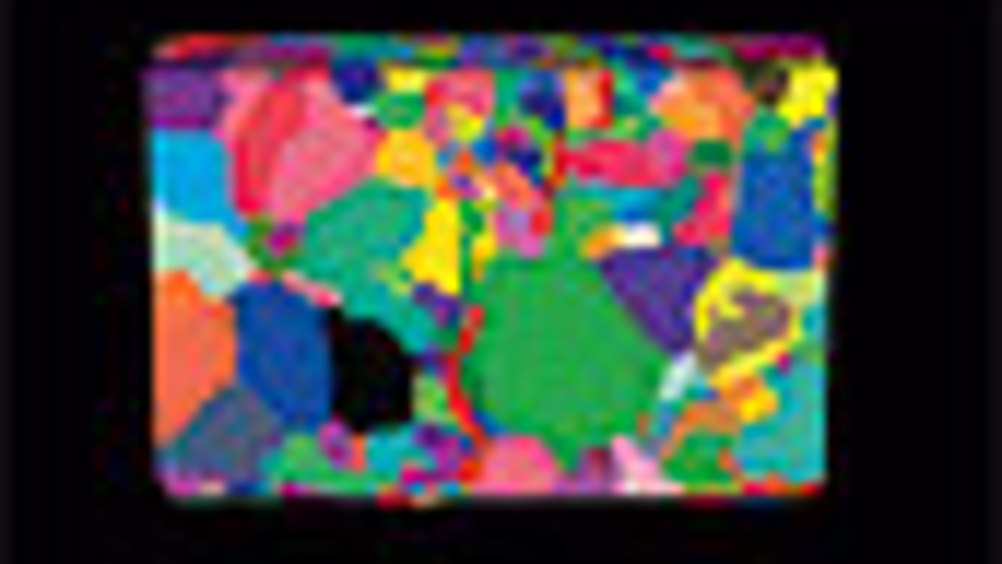Observing strain in the grain

Researchers have used a new, non-destructive mapping technique to determine how a growing crack interacts with the internal 3D crystal structure of stainless steel.
The development could lead to a better understanding of how materials behave under stress in corrosive environments.
Stress or strain, combined with a corrosive environment, can cause cracks in stainless steel components, leading to critical failure. In power stations, the boundaries of certain grains inside a material can become sensitive after intensive heat treatments. Similar occurrences can happen in nuclear power stations during fast neutron irradiation.
'It's already been known that some grain structures are special and resist cracking, but this technique gives us a 3D picture and it provides access to more information than previously available,' said Andrew King, Manchester University's lead developer.
The university and the National Institute of Applied Sciences in Lyon jointly sponsored the research at the European Synchrotron Radiation Facility (ESRF) in Grenoble.
For the experiment, researchers took a section of stainless steel wire 0.4mm in diameter and replicated conditions found in a power station. They first obtained a 3D map of the grains in the wire using the new diffraction contrast tomography technique developed at ESRF. A radiation beam was aimed at the metal's crystals at various angles, creating a map containing the shapes, positions, and orientations of 362 different grains.
The next stage of the experiment involved putting the wire into a corrosive liquid and applying a load to cause microcracks to grow between grains. During the crack growth, 3D tomographic scans were taken at varying intervals to follow the progress of the crack.
'The cracks grew along the boundaries between the grains which we had mapped in 3D, and we could visualise both the growing crack and certain special boundaries that resist cracking,' said King. 'Some of these resistant boundaries were not the ones that we expected.'
King said now that his group has proved that diffraction contrast tomography works, the next stage will be to make the technology more 'user friendly' so anyone can apply to use the technique at the synchrotron.
'It is quite a complex set of calculations to actually go from the images you take in an experiment to a grain map,' he said. 'There is a lot of data analysis and data processing. It's that intermediate step that needs to be made simplified and more user-friendly.'
Register now to continue reading
Thanks for visiting The Engineer. You’ve now reached your monthly limit of news stories. Register for free to unlock unlimited access to all of our news coverage, as well as premium content including opinion, in-depth features and special reports.
Benefits of registering
-
In-depth insights and coverage of key emerging trends
-
Unrestricted access to special reports throughout the year
-
Daily technology news delivered straight to your inbox










CCC Report Finds UK Climate Targets Still Within Reach
In 1990 67% of the UK´s electricity came from coal-fired power stations and even without renewables the transition to gas was a major contributor to...